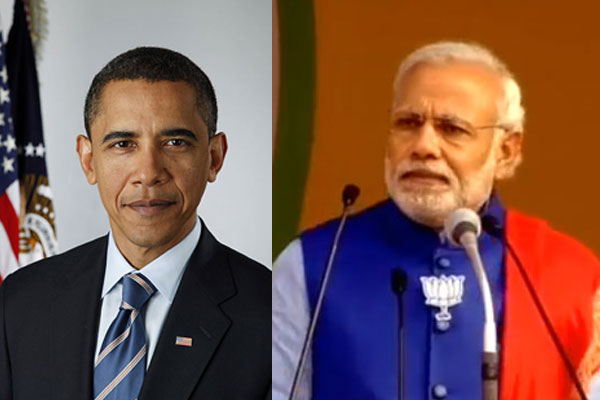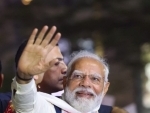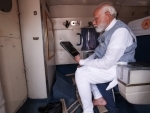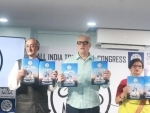
Bucket list for Obama-Modi Republic Day Summit
The newfound bonhomie between the Indian Prime Minister Modi and US President Obama seems to continue for an extended phase. What started with the famous kemcho greeting by Obama has already blossomed to a new high, with the White House confirming that the President will indeed be a guest of honor during the symbolic, but highly significant Republic Day celebrations in India, in January 2015.
This clearly marks the beginning of a new era of Indo-US relationship, successfully stemming the diplomatic stalemate around the arrest and strip-search of the Indian consular, Devyani Khobragade. The proposed second summit, in a short span of less than four months, also depicts the emerging possibilities and warming ties between the world’s two largest and diverse democracies. The visit of President Obama in January 2015,stands out as a diplomatic victory for the new BJP Government in Delhi. Prime Minister Modi can well be credited with galvanizing and fast-tracking the wilting Indo-US tie.
While both the countries are likely to politically posture this move as a diplomatic leap in their effort to strengthen and expand the Indo-US partnership, there aresome serious business lying ahead for both. If Modi’s US visit was meant to break the ice, now is the time to push substantive agreements around business and international strategic affairs.
Obama’s extensive authority in influencing Indo-US policies may seem slightly doused with the mid-term electoral debacle of the democrats, but he is still likely to call a few shots. This critical summit is coming at a propitious time, when both the countries are showing early signs of recovery after a protracted period of economic slump. Both the countries are seeking FDI and access to free market in their bid to reinvigorate their respective economies. The key officials from the state department and the PMO must be working overnight to prepare an extended bucket list, ahead of this crucial meet. It must be ensured that the deliberations this time take a quantum leap and don’t stop at the usual diplomatic rhetoric of increasing security ties and transfer of green technology.
Washington, for its part, is also eager for India to become stronger so that it can play a greater role as a counterweight to a rising and assertive Beijing.The growing bond between India and the US is being viewed as a soft-check on the expansionist agenda of the red dragon in the South China Sea, and other maritime and border disputes.
More than Modi, the proposed visit will be an acid test for Obama. He has to walk a diplomatic tightrope in New Delhi to ensure that relations with Pakistan and China, often at loggerheads with India, stay stable and unperturbed. The Pakistani camp on its part has already turned up the decibel on Kashmir, soon after the announcement of Obama’s visit. The calls made by President Obama to his counterpart in Islamabad exposed the need to pacify an anxious Pakistan. It is indeed imperative that India and the US move ahead strategically in the light of the changing power equations in Asia.
Obama's decision to pass the immigration reform law, largely benefitting the Indians in the US, has set the tone for the upcoming meeting. The Modi Government has reciprocated with the same alacrity by passing the long-pending insurance legislation, increasing the FDI cap in the insurance sector. This would enable greater participation of the US corporates in the grossly under-insured, but hugely lucrative Indian market. 

There is much on the agenda for both the incumbent leaders to deliberate upon before they ink the deal. The Indian list would far exceed the US, for sure. But there are again a set of contentious issues for both the leaders to deal with.
The first and foremost agenda would be to kick-start the frozen Indo-US civil-nuclear deal. The historic nuclear agreement is yet to translate into concrete action and has been languishing over intellectual-property rights and nuclear-liability disputes. Prime Minister Modi would be interested in getting the deck cleared, allowing greater participation from the US nuclear power giants supplying turbines and technical know-how, to bridge the growing power deficit in India.
Modi would also like to see the greater participation of the US private sector in his pet project of building 100 smart cities in India. Beside these, the Indian camp would once again pitch their flagship campaign of ‘Make in India’ and elicit affirmative commitment from the US corporateswho arepart of the entourage of President Obama. This would to be an objective follow-up of Modi’sbreakfast meeting,with the top US corporate leaders,vowing to remove bureaucratic hurdle and provide greater ease of doing business in India. As the previous meeting mapped the key priorities and concerns of the corporate sector of the US, some big-ticket announcementsarealso on the card. The US too is dependent on India to power iteconomy. It can be a win-win situation for both the countries.
Another area of strategic partnership would for both the leaders to explore the possibility of broadening the defence engagement, especially engaging in co-production and co-development defence projects with India. This would transition the defence trade beyond the ‘buyer-seller’ arrangement to substantial co-production and, eventually, joint research and development of cutting-edge technology. But as Russia continues to remain India’s biggest defence providers, the US would be increasingly cautious of committing any revolutionary defence ties with India. Raising the FDI cap in the defence sector has cleared the policy impediments, allowing greater participation of US private sector with resources and new-age technologies topartner with Indian counterpart to jointly develop defence equipment and system. The policy measure is anticipated to enhance the high-end manufacturing capability of Indian companies and modernize the defence industry in India. But there are some strenuous issue such as intellectual-property right, sensitive technology transfer and end-use monitoring to deal with. However some defining and forward-looking announcement, in this direction, are on the offing. This visit would push the scope and content of Indo-US military ties beyond exchange visits and joint military exercise.
India wants to see a reformed UN Security Council that includes India as a permanent member. Prime Minister Modi would once again reiterate India’s long-standing demand and look for an endorsement from the US again. This would be a genuine reflection of the Asian country's growing global weight and its challenge to rival China.
The UN seat is a pipe dream of India and face resistance from China. Russia also has refrained from being too vocal of India’s inclusion in the big boys club. Obama is expected to toe a mid path and broadly endorse the proposal, without committing to a stringent timeline, as it may irk Pakistan, China and few others. There are skeptics within the US camp against India’s inclusion, as India has often stood against the US in key UN votes around critical issues concerning to Iran, Russia and Sri Lanka.
Afghanistan imbroglio is sure to make the cut in the scheme of things lined up for Indo-US dialogue. The US is worried about Afghanistan with the withdrawal of NATO forces, post 2014. President Obama would like to excite India to explore a more aggressive role in rebuilding Afghanistan, after the departure of NATO forces. India has employed a development kitty of almost 2 billion USD in Afghan projects including roads and power infrastructure, a huge grant, even by international standards. India is the largest civilian donor in Afghanistan, after US and Japan. Besides civilian assistance, India has also extended soft military support to Afghanistan, in terms of training Afghan military forces in India. In addition to the long-standing historic and cultural ties, India’s development forays in Afghanistan have generated tremendous popular and political goodwill in the country beleaguered with terrorism and civil strife, spanning over decades.In order to tap the growing popularity of India, US would aim to influence India to broaden their scope of military engagement in Afghanistan. Similar request has been flowing from the incumbent Afghan government too. In all probability, India would expand their soft military roles, but refrain from sending any in-situ machine and military support.
Other trendy topics like global warming, climate change and global trade arrangement will find their due place in the proposed dialogue. The two heads of the state would also focus on a wide range of regional issues, including, Syria, Iraq, and Ukraine, where India and the US can work together towards far-reaching positive outcomes.
Last but not the least, they would be expediting the process and arrangement of sharing intelligence on terror network, for the mutual benefit of both the countries. And the dialogue would most probably end with a surreptitious nudge to kick-start the stalled India-Pakistan dialogue. An Indo-US relationship requires re-balancing and the long-standing ties are due for a make-over in a rapidly changing Asian strategic landscape. This may emerge as the defining partnership of the 21st century as envisioned by Obama during his India visit in 2010
(Sujeet Sarkar works as an international advisor on governance and writes columns on international affairs for leading international dailies)
Support Our Journalism
We cannot do without you.. your contribution supports unbiased journalism
IBNS is not driven by any ism- not wokeism, not racism, not skewed secularism, not hyper right-wing or left liberal ideals, nor by any hardline religious beliefs or hyper nationalism. We want to serve you good old objective news, as they are. We do not judge or preach. We let people decide for themselves. We only try to present factual and well-sourced news.







